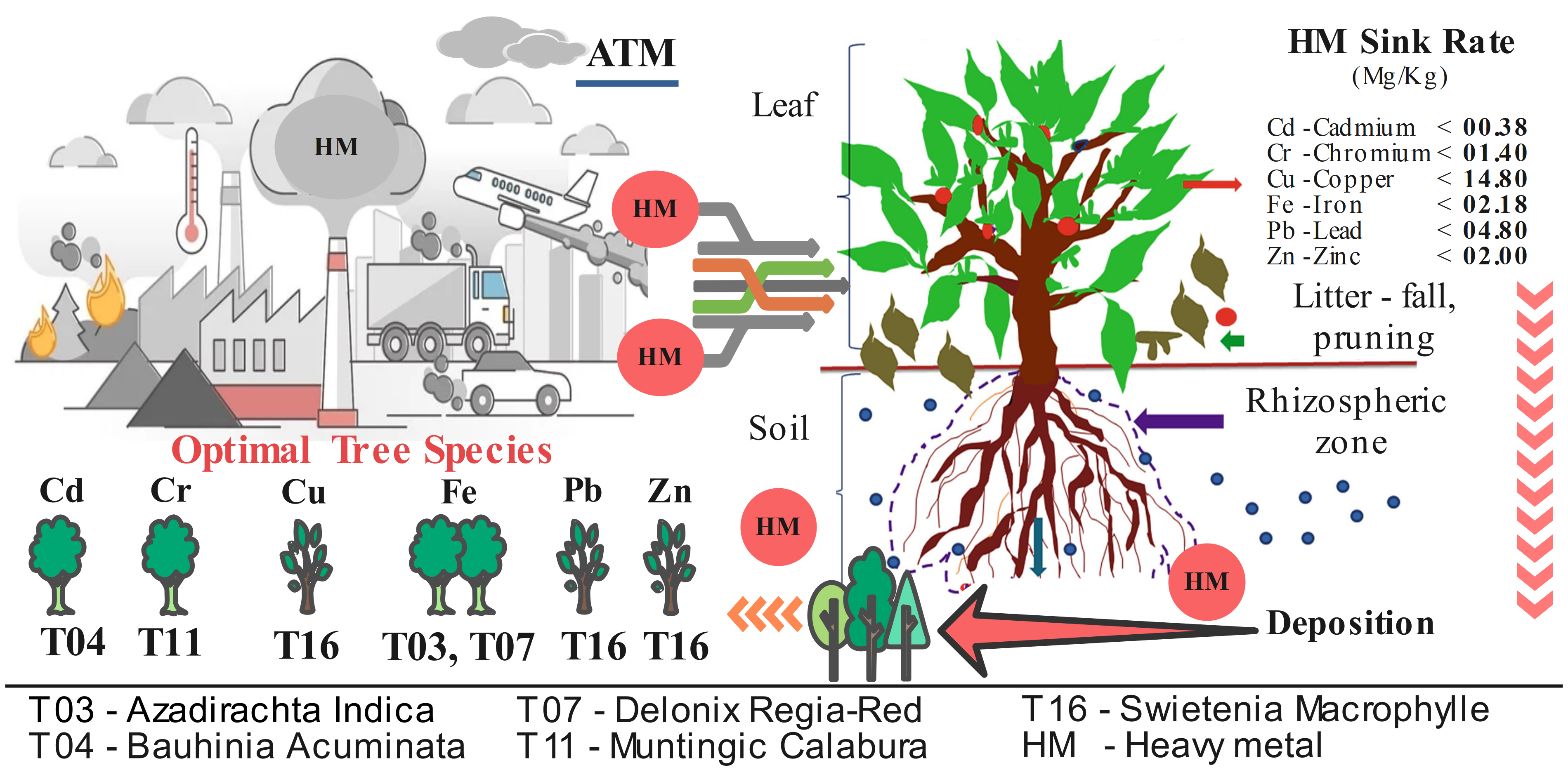
Transportation driven by fossil fuels increases air pollution induced by urbanisation. Heavy metals such as Cadmium (Cd), Chromium (Cr), Copper (Cu), Iron (Fe), Lead (Pb), and Zinc (Zn) are life-threatening elements and their concentration is increasing alarmingly in soil in various countries. Air pollution and associated metals contaminate the environment and affect nature's abiotic and biotic components. The significance of tree species originates from their connection to the effects of pollution and the solution approach to their biological cycle. Nineteen distinct tree species dominate the region, with heavy metals sinking in the range of Cd<0.4, Cr<1, Cu<15, Fe<2, Pb<5, and Zn<2 mg/kg or parts per million. According to the findings of this study, tree species can sink heavy metals. The different trees have distinct metals-sink ratios. The competence results showed the order of heavy metal sink as Delonix Regia-red (4) > Delonix Regia-yellow (4) > Syzygium Cumini (3) > Muntingic Calabura (3) of the trees with the highest sink rates and nine species had absorbed lead metal. The nine tree species were unsuitable for heavy metal absorption or deposition. There, Albizia Lebbeck (T02), Biancaca Decapetela (T05), Brucea Javanica (T06), Ficus Elastica (T09), Ficus Religiosa (T10), Pithecellobium Dulce (T13), Tamarind (T17), Terminalia Catappa (T18), and Thespesia Populnea (T19) were very low, less than 10% of other dominant tree species. Syzygium cumini (T16) is a high-yielding tree species that absorb significant quantities of Lead (Pb) and Copper (Cu). These studies confirm that, tree species can capture several heavy metals simultaneously from the polluted environment.
Total file downloads: 3